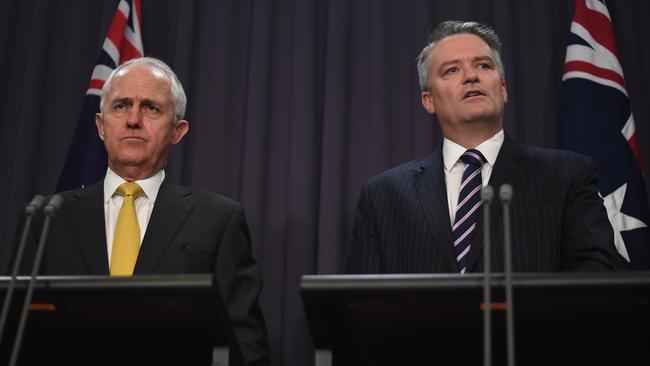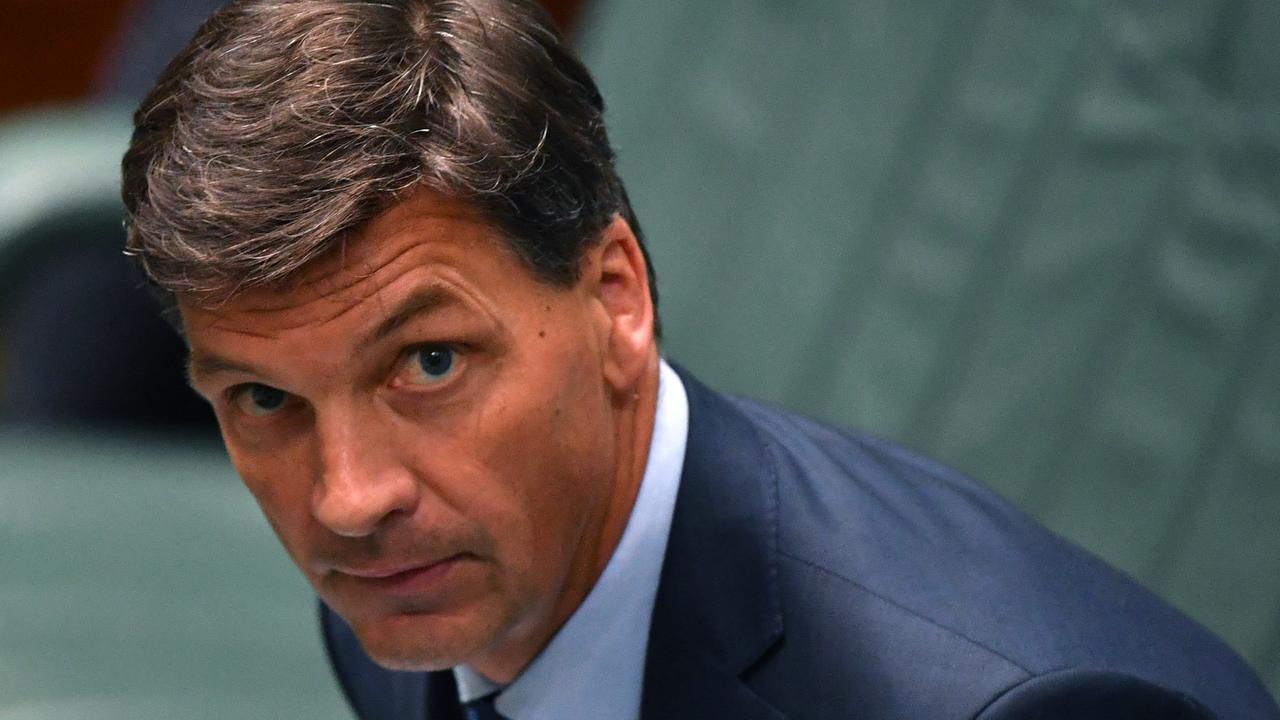Same-sex marriage postal vote to cost $122m
The Coalition agrees on dates for a plebiscite and postal vote to be run by the Australian Bureau of Statistics.

The Coalition has agreed on a date for a $122 million same-sex marriage postal vote if a bill for a compulsory plebiscite fails in the Senate as expected.
The government has found a way to dodge one of the biggest legal threats against its postal vote on gay marriage, asking the Australian Bureau of Statistics to conduct the survey rather than relying on electoral law.
PoliticsNow: Follow all the developments from Parliament as they happen in our live blog.
Coalition MPs were told on Tuesday morning that the government will commission the ABS — which is still reeling from last year’s bungled census — to run the postal vote amid legal threats from marriage equality advocates who oppose the public vote.
The party room meeting heard that the Whitlam government used a similar approach with the ABS to get the views of Australians on the national song, suggesting it could be done without being defeated in the courts.
The government’s first option is to hold a compulsory plebiscite on November 25 but this option appears likely to be defeated in the Senate as soon as this week, given Labor, the Greens, the Nick Xenophon Team and independent Derryn Hinch intend to vote against it.
The second plan is the optional postal vote to be conducted by the ABS, with ballot papers sent out on September 12.
The last date for receiving the completed ballot papers would be November 7, with the result to be declared by November 15.
This would clear the way for a vote in parliament in the final fortnight of parliament which starts on November 27.
At a press conference in Canberra, the Prime Minister said the Coalition was honouring its 2016 election promise to give Australians a say on marriage equality.
“Strong leaders carry out their promises, weak leaders break them,” he said. “I’m a strong leader. I made that promise again and again. The important thing is every Australian gets their say. The PM says all Australians should be able to marry and he and wife Lucy will be voting ‘yes’ in a postal plebiscite. “I’d encourage others to do so.”
“There are arguments against having a plebiscite, I understand that. But the weakest argument of all is that the Australian people are not capable of having a respectful discussion on this issue.
“Do we think so little of our fellow Australians and our ability to debate important matters of public interest that we say, ‘You’re not able to have a respectful discussion about the definition of marriage’, which is a very significant, important, fundamental element in our law and culture. Australians are able and have demonstrated that they can have a respectful discussion.”
Acting Special Minister of State Mathias Cormann confirmed the postal plebiscite will cost $122 million, down from $160m for the original plebiscite proposal.
“The Treasurer will be directing the Australian statistician to ask to request on a voluntary basis information, statistical information, from all Australians on the electoral law as to their views on whether or not the law in relation to same-sex marriage should be changed to allow same-sex couples to marry.
“Incidentally, there is a precedent in Australia for an Australian government asking Australians for their opinion in relation to a matter of public policy, namely the Whitlam Government in 1974, conducted a phone survey of 60,000 randomly selected Australians through the ABS as to what their view was in relation to Australia’s national anthem and at the end of that process, 51.4 per cent of Australians so survey by the ABS opted for the Australian national anthem to be changed to Advance Australia Fair.’’
Deputy Labor leader Tanya Plibersek said a postal vote for same-sex marriage would lack legitimacy because it is a “dodgy process”. Ms Plibersek doubted the Australian Bureau of Statistics would be able to properly run the voluntary vote.
“We saw the problems that the ABS had with the census and now we are supposed to imagine that this unprecedented vote is handled by the ABS,” Ms Plibersek told Sky News.
“I think that people will question the legitimacy of it because it is a dodgy process, we know that both the plebiscite and now this postal plebiscite are dreamt up by people who are opponents of marriage equality to delay the inevitable.”
Ms Plibersek said Malcolm Turnbull was locked in by the right wing of his party.
“We know the majority of Australians support this, our parliament should just get on and do it,” she said. “I think it is interesting that this approach was not good enough for Malcolm Turnbull when it came to the republic, he was critical of this approach when it came to the republic, it was not good enough for George Brandis just a few months ago but once again, because the right wing of the Liberal Party are determined to block marriage equality, come what may we are now considering this proposition.”
Former prime minister Tony Abbott told the Tuesday party room meeting that he did not favour the postal vote and wanted to stick to the compulsory plebiscite, a view also expressed by Kevin Andrews but not by any others who spoke at the meeting. Mr Abbott raised a similar concern at the Liberal meeting on Monday afternoon, when he said the postal vote was “not what we promised” to the Australian people at the 2013 federal election.
Senator Cormann responded to Mr Abbott in the Liberal meeting by saying the promise of a “people’s vote” had not specified the way the vote would be conducted.
Senator Cormann told the meeting that he had checked the records and at no stage had Mr Abbott or Mr Turnbull told voters the popular vote had to be done by a compulsory plebiscite at polling booths.
The plan to use the ABS to run the ballot raises questions about how it would be conducted –—given the furore over the census last year — but sidesteps the legal threats raised by marriage equality advocates.
The Human Rights Law Centre has legal advice saying the postal vote could be challenged in court, but the advice assumes the government would use Section 7 of the Commonwealth Electoral Act and use the Australian Electoral Commission to conduct the vote.
With Greg Brown



